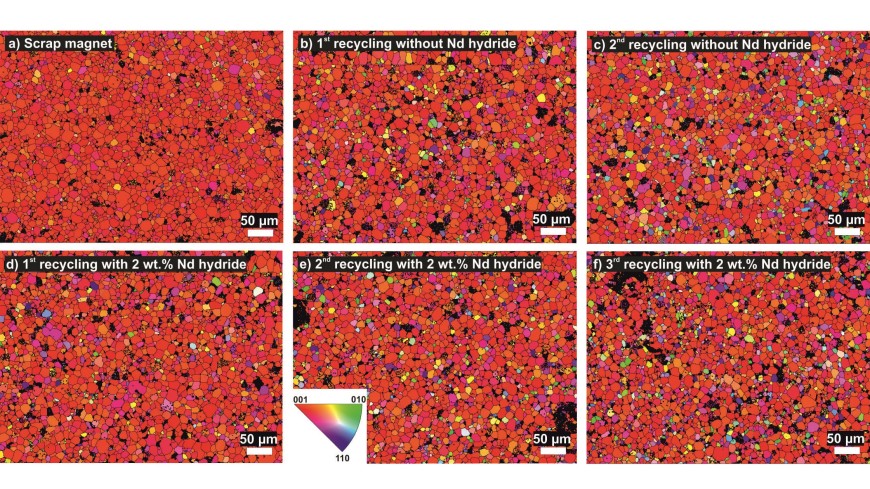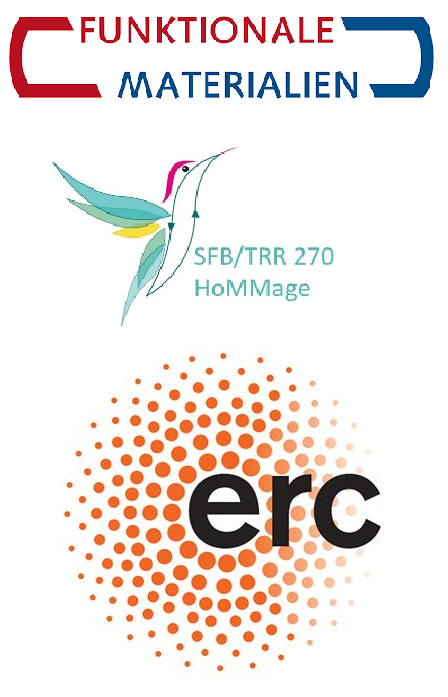Magnetic and structural properties of multiple recycled and sustainable sintered Nd-Fe-B magnets
New publication
2023/01/23

M. Schönfeldt, U. Rohrmann, P. Schreyer, M. Hasan, K. Opelt, J. Gassmann, A. Weidenkaff, O. Gutfleisch
Journal of Alloys and Compounds 939, 168709 (2023).
DOI: 10.1016/j.jallcom.2023.168709
Our joint work between Technische Universität Darmstadt and the Fraunhofer Research Institution for Materials Recycling and Resource Strategies IWKS deals with the development of magnetic and structural material properties of recycled sintered Nd-Fe-B magnets. Scrap magnets from magnetic resonance tomography (MRT) devices with nominal composition of Nd28.04Dy0.80Tb0.44FebalB1.06Co1.65Al0.34Ga0.22Cu0.18 (wt. %) were recycled multiple times with the so-called magnet-to-magnet or functional recycling approach employing hydrogen decrepitation. Changes in different material properties like chemical composition, impurity content, particle size, magnetic properties, microstructure and degree of alignment were investigated in detail. The multiple processing and recycling leads to a decrease in texture, orientation and the resulting magnetic properties of the recycled magnets, respectively. Meanwhile impurities and particle size of the material increase through several milling and sintering processes. Different amounts of Nd hydride were mixed with the recyclate to improve the properties. With 4 wt. % Nd hydride the density of the recycled magnets can be fully restored. It was shown that magnetic properties of the recycled magnets meet the specification of primary magnets even after several cycles. Moreover, they outperform magnets produced from primary materials in terms of sustainability with lower ecological and social footprints and can lower the production cost of appliances using permanent magnets by reducing the energy consumption and raw material costs.



